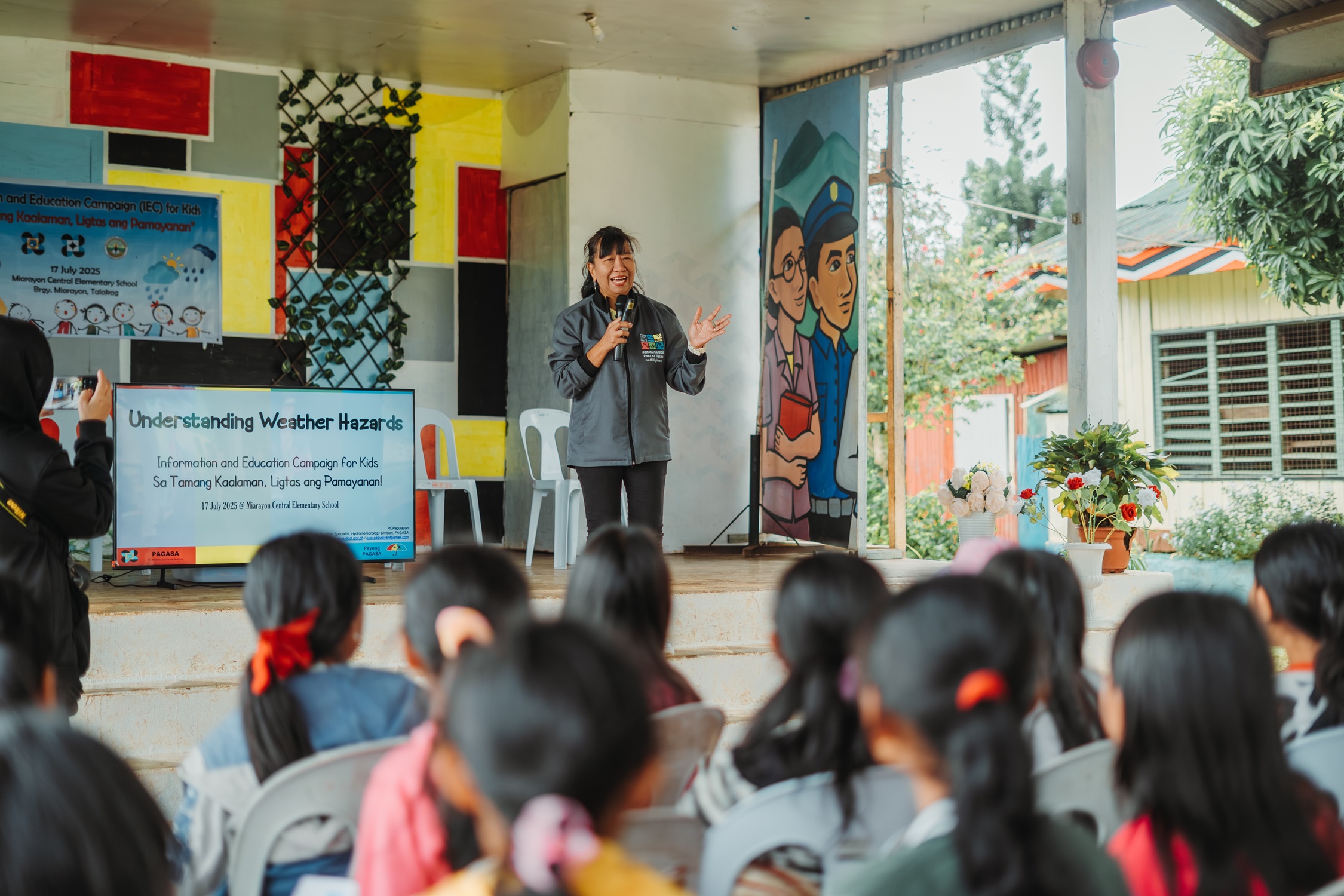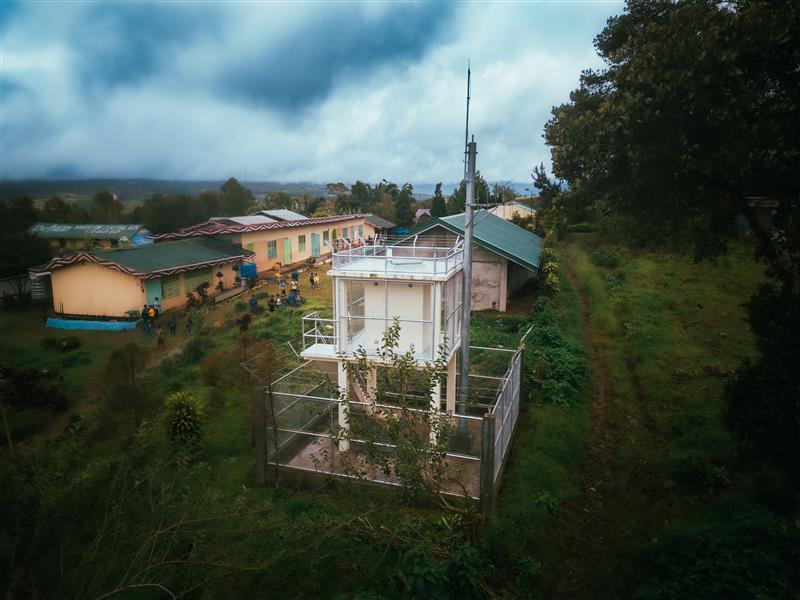Students, teachers join JICA-supported activity to strengthen 'culture of flood preparedness'
2025.07.17
As part of efforts to build disaster-ready communities in Northern Mindanao, students and teachers of Miarayon Central Elementary School in Talakag, Bukidnon took an active role in an Information, Education, and Communication (IEC) activity held on July 17, 2025.
The IEC aimed to raise awareness among young learners on how rainfall and water level data are used in operational flood forecasting, and to build appreciation for the life-saving value of timely, science-based early warnings especially in the surrounding areas of the Cagayan de Oro River Basin (CDORB) in Bukidnon and Misamis Oriental.
Led by the Philippine Atmospheric, Geophysical and Astronomical Services Administration (PAGASA) and the Department of Education (DepEd), and supported by the Japan International Cooperation Agency (JICA), the IEC is part of the broader project to improve the Flood Forecasting and Warning System (FFWS) for the CDORB. The project is backed by a JPY 1.278 billion grant from the Japanese government which will be used mainly to modernize the Philippines' flood monitoring facilities and strengthen national resilience to climate-related hazards.
1

Ms. Rosalie "Oyie" Pagulayan, resource speaker from PAGASA, conducts an interactive IEC activity for students, teachers, and parents.
The FFWS project includes the construction of 13 monitoring stations -- seven equipped with both rainfall and water level sensors, and six with rainfall only -- along with two X-band radars that enhance data coverage and accuracy. These are connected through a dedicated communications network that enables real-time data sharing across PAGASA's Central Office in Quezon City, its Mindanao regional office and other disaster response agencies.
Since the installation of the new system, PAGASA has been able to monitor thunderstorm and rainfall patterns more closely and issue more localized warnings, particularly in upstream areas where ground observation was previously limited. This data is crucial for forecasting and issuing weather and flood advisories in areas surrounding not only Cagayan de Oro River Basin but also the Tagaloan River Basin. The upgraded infrastructure also supports improved coordination among the DOST-PAGASA, Office of Civil Defense (OCD), Department of Public Works and Highways (DPWH), and Local Government Units (LGUs). For communities like Miarayon, these improvements mean earlier alerts and more time to prepare for possible disaster events.
Miarayon Central Elementary School was chosen as the IEC site in recognition of its continued support for the CDORB FFWS project and for one of its crucial installations, the Rainfall Gauge Station 13 (R13). Situated within school grounds, R13 gathers vital rainfall data used in forecasting flood conditions in the upstream portions of the river basin and in anticipating flood events downstream.
By involving the school community in the upkeep and security of R13, PAGASA, DepEd, and JICA emphasize that disaster preparedness begins within the community, and that community ownership makes early warning systems more effective. It is not solely a government responsibility, but a shared one.
The IEC activity empowered over 60 students, teachers, and parents to better understand weather and flood hazards and warnings, and see themselves as active participants in protecting their communities. In doing so, the CDORB FFWS moves beyond infrastructure and technology as it fosters a lasting culture of preparedness that saves lives.

Rainfall gauge station (R13) at Miarayon Elementary School in Bukidnon.
scroll